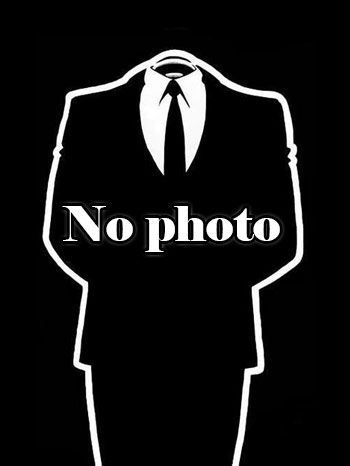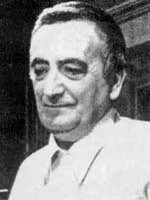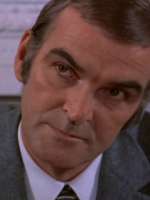Joseph E. Levine is a Producer and Presenter American born on 9 september 1905 at Boston (USA)

Joseph Edward Levine (September 9, 1905 – July 31, 1987) was an American film producer.
Birth and early life
Levine was born in a slum in Boston, Massachusetts on September 9, 1905. The youngest of six children of a Russian immigrant tailor, Joe did whatever work he could to help support his mother, a widow who had remarried only to have her second husband abandon her. This led him, in his later years, to tell an interviewer that he had known, in his words, "not one happy day" growing up. At 14 years of age, he was hired for full-time work in a dress factory and left school, never to re-enroll.
In the 1920s, in partnership with two of his older brothers, Joe opened a basement dress shop, whose stock the Levine brothers obtained on consignment. Nan Robertson's obituary of him for the New York Times notes that he "briefly drove an ambulance, manufactured little statues of Daddy Grace, a black evangelist, and operated the Cafe Wonderbar in Boston's Back Bay" during this period and during the early and middle 1930s.
Marriage and early career
In 1937, Levine encountered Rosalie Harrison, then a singer with Rudy Vallee's band, and left the restaurant business for her; within a week of their engagement, at Harrison's insistence, Levine sold the Cafe Wonderbar. They married the following year and moved to New Haven, Connecticut, where Joe bought, and commenced to run, a movie house. Eventually, he became a successful, if small-time, distributor and exhibitor throughout New England, buying "decrepit" Westerns at low rates for his movie houses.
One of Levine's most unusual successes was Body Beautiful, a sex-hygiene film which he saw drawing a line of prospective ticket-buyers who were braving a snowstorm to that end. He later remembered buying it to show in his theaters because "it made me sick."
World War II and double bills
The Second World War led Levine to run an almost jingoistic promotion of the film Ravaged Earth, which had been shot in China. Renting the Shubert Theater in his native Boston, he spent large sums of his own money on advertisements for the film that he wrote himself; these reflected the anti-Japanese sentiments of the times and used language that would later be considered offensive. Robertson's obituary quotes one of the slogans as reading: "Jap Rats Stop at Nothing - See This. It Will Make You Fighting Mad."
Levine discovered that double features with the same cast members or similar titles brought in higher box-office revenues; this led him to present two movies together because they had similar titles. When, in 1956, he bought the Australian film Walk Into Paradise, its low box-office revenues led him to change the title to Walk Into Hell, which gave it box-office success.
Known producing career
Embassy Pictures is born
In 1956, the year he brought Walk Into Paradise to the United States under the title Walk Into Hell, Levine founded Embassy Pictures Corporation, an independent studio and distributor which became responsible for such films as Godzilla, King Of The Monsters! in 1956, Attila and Hercules, both in 1958, The Carpetbaggers, Harlow, The Graduate, A Bridge Too Far, and The Lion in Winter.
The promotion of Sophia Loren
Levine's Embassy Pictures began dealing in art films, often European ones, in the 1960s. During that decade, he reached the peak of his career and his prestige, which he was able to sustain into the 1970s.
In 1961, Levine bought North American distribution rights for Two Women after seeing no more than three minutes of its "rushes." He was not credited as the "executive producer" of Two Women, which was based on a novella written by Alberto Moravia, had been directed by Vittorio de Sica, and starred Sophia Loren and Eleanora Brown, who acted out the respective roles of a mother and her young daughter whom World War II had displaced from their home. One segment of it showed Moroccan soldiers raping the mother and the daughter.
Levine's promotional campaign focused on one still photograph, which showed Loren, as the mother, wearing a torn dress, kneeling in the dirt, and weeping with rage and grief. Predicting that she would win the Academy Award for her performance, Levine brought Loren to the United States for interviews, bought space for, and placed, large advertisements in newspapers, and saw to it that Two Women appeared in the cities of residence of Academy Award jury members.
Levine's efforts paid off when Loren became the first cast member of a foreign-language film to win the Academy Award for best actress. It came to be said of him that he "nursed" Two Women towards its ultimate popularity and success.
Known trademarks
Levine became famous in the industry for his massive advertising campaigns, starting with Hercules in 1959. He is also responsible for having brought the Japanese movie Gojira to the American general public under the title Godzilla, King Of The Monsters! in 1956. Levine had hired Terry Turner, who had been a former RKO Pictures exploitation expert of the late 1920s and 1930s, where he had exploited King Kong amongst other films. Levine's and Turner's exploitation campaigns were designed to appeal both to the general public and to the film industry and exhibitors.
Known honors
In 1964, Levine received the Golden Globe Cecil B. DeMille Award in recognition of his lifetime achievement in motion pictures.
His death
Levine died on July 31, 1987, in Greenwich, Connecticut, at the age of 81. His known survivors included, in addition to his widow, the former Rosalie Harrison, his son Richard Levine, who then lived in Greenwich, his daughter Tricia Levine, and two grandchildren, whose names Richardson did not provide.
 (1967)
(1967)
(Executive Producer) (1977)
(1977)
(Producer)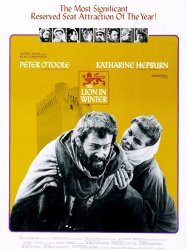 (1968)
(1968)
(Executive Producer)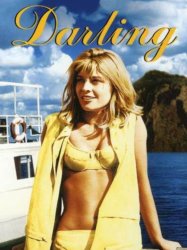 (1965)
(1965)
(Executive Producer) (1966)
(1966)
(Executive Producer) (1971)
(1971)
(Executive Producer)
Source : Wikidata
Joseph E. Levine

- Infos
- Photos
- Best films
- Family
- Characters
- Awards
Birth name Joseph Edward Levine
Nationality USA
Birth 9 september 1905 at Boston (USA)
Death 31 july 1987 (at 81 years) at Greenwich (USA)
Nationality USA
Birth 9 september 1905 at Boston (USA)
Death 31 july 1987 (at 81 years) at Greenwich (USA)
Joseph Edward Levine (September 9, 1905 – July 31, 1987) was an American film producer.
Biography
All the information provided here is gleaned from the obituary of Levine written for the New York Times by Nan Robertson and published the day after Levine's death.Birth and early life
Levine was born in a slum in Boston, Massachusetts on September 9, 1905. The youngest of six children of a Russian immigrant tailor, Joe did whatever work he could to help support his mother, a widow who had remarried only to have her second husband abandon her. This led him, in his later years, to tell an interviewer that he had known, in his words, "not one happy day" growing up. At 14 years of age, he was hired for full-time work in a dress factory and left school, never to re-enroll.
In the 1920s, in partnership with two of his older brothers, Joe opened a basement dress shop, whose stock the Levine brothers obtained on consignment. Nan Robertson's obituary of him for the New York Times notes that he "briefly drove an ambulance, manufactured little statues of Daddy Grace, a black evangelist, and operated the Cafe Wonderbar in Boston's Back Bay" during this period and during the early and middle 1930s.
Marriage and early career
In 1937, Levine encountered Rosalie Harrison, then a singer with Rudy Vallee's band, and left the restaurant business for her; within a week of their engagement, at Harrison's insistence, Levine sold the Cafe Wonderbar. They married the following year and moved to New Haven, Connecticut, where Joe bought, and commenced to run, a movie house. Eventually, he became a successful, if small-time, distributor and exhibitor throughout New England, buying "decrepit" Westerns at low rates for his movie houses.
One of Levine's most unusual successes was Body Beautiful, a sex-hygiene film which he saw drawing a line of prospective ticket-buyers who were braving a snowstorm to that end. He later remembered buying it to show in his theaters because "it made me sick."
World War II and double bills
The Second World War led Levine to run an almost jingoistic promotion of the film Ravaged Earth, which had been shot in China. Renting the Shubert Theater in his native Boston, he spent large sums of his own money on advertisements for the film that he wrote himself; these reflected the anti-Japanese sentiments of the times and used language that would later be considered offensive. Robertson's obituary quotes one of the slogans as reading: "Jap Rats Stop at Nothing - See This. It Will Make You Fighting Mad."
Levine discovered that double features with the same cast members or similar titles brought in higher box-office revenues; this led him to present two movies together because they had similar titles. When, in 1956, he bought the Australian film Walk Into Paradise, its low box-office revenues led him to change the title to Walk Into Hell, which gave it box-office success.
Known producing career
Embassy Pictures is born
In 1956, the year he brought Walk Into Paradise to the United States under the title Walk Into Hell, Levine founded Embassy Pictures Corporation, an independent studio and distributor which became responsible for such films as Godzilla, King Of The Monsters! in 1956, Attila and Hercules, both in 1958, The Carpetbaggers, Harlow, The Graduate, A Bridge Too Far, and The Lion in Winter.
The promotion of Sophia Loren
Levine's Embassy Pictures began dealing in art films, often European ones, in the 1960s. During that decade, he reached the peak of his career and his prestige, which he was able to sustain into the 1970s.
In 1961, Levine bought North American distribution rights for Two Women after seeing no more than three minutes of its "rushes." He was not credited as the "executive producer" of Two Women, which was based on a novella written by Alberto Moravia, had been directed by Vittorio de Sica, and starred Sophia Loren and Eleanora Brown, who acted out the respective roles of a mother and her young daughter whom World War II had displaced from their home. One segment of it showed Moroccan soldiers raping the mother and the daughter.
Levine's promotional campaign focused on one still photograph, which showed Loren, as the mother, wearing a torn dress, kneeling in the dirt, and weeping with rage and grief. Predicting that she would win the Academy Award for her performance, Levine brought Loren to the United States for interviews, bought space for, and placed, large advertisements in newspapers, and saw to it that Two Women appeared in the cities of residence of Academy Award jury members.
Levine's efforts paid off when Loren became the first cast member of a foreign-language film to win the Academy Award for best actress. It came to be said of him that he "nursed" Two Women towards its ultimate popularity and success.
Known trademarks
Levine became famous in the industry for his massive advertising campaigns, starting with Hercules in 1959. He is also responsible for having brought the Japanese movie Gojira to the American general public under the title Godzilla, King Of The Monsters! in 1956. Levine had hired Terry Turner, who had been a former RKO Pictures exploitation expert of the late 1920s and 1930s, where he had exploited King Kong amongst other films. Levine's and Turner's exploitation campaigns were designed to appeal both to the general public and to the film industry and exhibitors.
Known honors
In 1964, Levine received the Golden Globe Cecil B. DeMille Award in recognition of his lifetime achievement in motion pictures.
His death
Levine died on July 31, 1987, in Greenwich, Connecticut, at the age of 81. His known survivors included, in addition to his widow, the former Rosalie Harrison, his son Richard Levine, who then lived in Greenwich, his daughter Tricia Levine, and two grandchildren, whose names Richardson did not provide.
Best films
 (1967)
(1967)(Executive Producer)
 (1977)
(1977)(Producer)
 (1968)
(1968)(Executive Producer)
 (1965)
(1965)(Executive Producer)
 (1966)
(1966)(Executive Producer)
 (1971)
(1971)(Executive Producer)
Usually with
Filmography of Joseph E. Levine (43 films)
Producer

Directed by Sidney Lumet
Genres Drama
Actors William Hutt, Martha Henry, Peter Donaldson, Tom McCamus, Martha Burns, Jason Robards
Roles Producer
Rating4%






Tattoo (1981)
, 1h43Directed by Bob Brooks
Origin USA
Genres Drama, Thriller, Horror, Erotic thriller
Themes Films about sexuality, Erotic films, Erotic thriller films
Actors Bruce Dern, Maud Adams, Leonard Frey, John Getz, Cynthia Nixon, John Snyder
Roles Producer
Rating53%





Karl Kinsky (Dern) is a mentally ill tattoo artist who is hired to create temporary tattoos for some models. He becomes obsessed with one of them, Maddy (Adams), whom he kidnaps to force her to wear "his mark." He keeps her captive as he creates his masterpiece on her body. Throughout the ensuing captivity, Maddy tries several times to escape, but her attempts are continually thwarted by Kinsky.

Magic (1978)
, 1h45Directed by Richard Attenborough
Origin USA
Genres Drama, Thriller, Horror, Romance
Themes Jeu, Films about magic and magicians, Films about toys
Actors Anthony Hopkins, Ann-Margret, Burgess Meredith, Ed Lauter, David Ogden Stiers, Jerry Houser
Roles Producer
Rating67%





Charles "Corky" Withers has just failed in his first attempt at professional magic. His mentor 'Merlin' (E.J.André) says that he needs to have a better show business gimmick. A year later, Corky comes back as a combination magician and ventriloquist with a foul-mouthed dummy named Fats and is a huge success.

A Bridge Too Far (1977)
, 2h50Directed by Richard Attenborough, Sidney Hayers
Origin USA
Genres Drama, War, Action, Adventure, Historical
Themes Pont, Political films
Actors Dirk Bogarde, James Caan, Michael Caine, Sean Connery, Michael Byrne, Edward Fox
Roles Producer
Rating73%





The film begins with a montage of archival film footage narrated by a Dutch woman, Kate ter Horst, describing the state of affairs in September 1944. The Allied advance is being slowed by overextended supply lines.
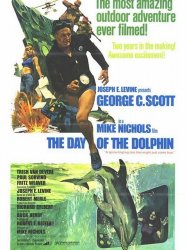
The Day of the Dolphin (1973)
, 1h44Directed by Mike Nichols
Origin USA
Genres Drama, Science fiction, Thriller, Action, Adventure, Crime
Themes Films about animals, Seafaring films, Transport films, Cétacé, Films based on science fiction novels, Political films, Mise en scène d'un cétacé
Actors George C. Scott, Trish Van Devere, Paul Sorvino, Edward Herrmann, Jon Korkes, Fritz Weaver
Roles Executive Producer
Rating59%





A brilliant and driven scientist, Jake Terrell, and his young and beautiful wife, Maggie, train dolphins to communicate with humans. This is done by teaching the dolphins to speak English in dolphin-like voices. Two of his dolphins, Alpha ("Fa") and Beta ("Bea"), are stolen by officials of the shadowy Franklin Foundation headed by Harold DeMilo (Fritz Weaver), the supportive backer of the Terrells' research. After the dolphins are kidnapped, an investigation by an undercover government agent for hire, Curtis Mahoney (Paul Sorvino), reveals that the Institute is planning to further train the dolphins to carry out a political assassination by having them place a magnetic limpet mine on the hull of the yacht of the President of the United States.
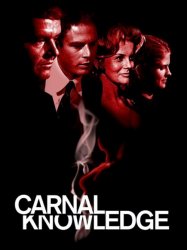
Carnal Knowledge (1972)
, 1h37Directed by Mike Nichols
Origin USA
Genres Drama, Comedy, Comedy-drama, Romance
Themes Films about sexuality, Erotic films
Actors Jack Nicholson, Art Garfunkel, Ann-Margret, Candice Bergen, Rita Moreno, Carol Kane
Roles Executive Producer
Rating68%





The film follows the sexual exploits of two Amherst College roommates over a 25 year period, from the late 1940s to the early 1970. Sandy (Art Garfunkel) is gentle and passive, while Jonathan Fuerst (Jack Nicholson) is tough and aggressive. Sandy idolizes women, while Jonathan objectifies women. Neither are able to sustain a relationship with a woman.
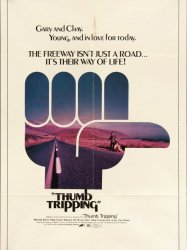
Thumb Tripping (1972)
, 1h34Origin USA
Genres Drama
Actors Bruce Dern, Meg Foster, Marianna Hill, Michael Burns, Burke Byrnes, Michael Conrad
Roles Executive Producer
Rating55%





Adventuerous hitchhikers decide to accept every ride their offered and end up with more than they bargained for.

Trinity Is Still My Name (1971)
, 1h47Directed by Enzo Barboni
Origin Italie
Genres Comedy, Action, Western
Themes Buddy films
Actors Terence Hill, Bud Spencer, Yanti Somer, Harry Carey, Jr., Benito Stefanelli, Enzo Fiermonte
Roles Executive Producer
Rating72%





The film begins with Bambino (Bud Spencer) walking through the desert carrying his saddle. He sees smoke from a campfire, and goes to investigate. There he finds four escaped Denver convicts, and steals their beans and horses, after knocking one convict out with a single blow to the top of his head. When the guy awakens, he has become addlepated (becoming a running gag throughout the film).
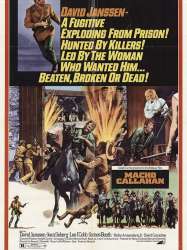
Macho Callahan (1971)
, 1h39Directed by Bernard L. Kowalski
Origin Mexique
Genres Action, Adventure, Western
Actors David Janssen, Jean Seberg, Lee J. Cobb, James Booth, Pedro Armendáriz (fils), David Carradine
Roles Executive Producer
Rating54%





Placed behind bars during the war, Diego Callahan, also known as "Macho," travels to Texas looking for the man responsible for his imprisonment.
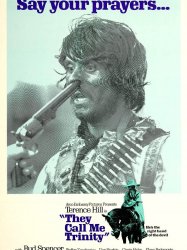
They Call Me Trinity (1970)
, 1h53Directed by Enzo Barboni
Origin Italie
Genres Comedy, Action, Western
Themes Buddy films
Actors Terence Hill, Bud Spencer, Farley Granger, Luciano Rossi, Gisela Hahn, Ugo Sasso
Roles Producer
Rating74%





Trinity (Terence Hill) comes into view accompanied by the movie's theme song, being dragged around in a travois by his horse. He is filthy, yet seems perfectly content as the horse drags him across the desert and through water crossings. When the horse stops near a dwelling, Trinity gets up, pulls on his boots, gets stung by a scorpion hiding in the boot (but is clearly insusceptible to the venom), drags his Colt 45 in holster, feeds some hay to his horse, then walks inside.
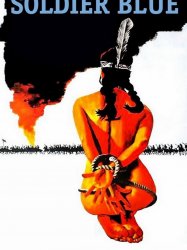
Soldier Blue (1970)
, 1h52Directed by Ralph Nelson
Origin USA
Genres Drama, Action, Romance, Western
Themes Political films
Actors Candice Bergen, Peter Strauss, Donald Pleasence, Dana Elcar, Jorge Rivero, John Anderson
Roles Executive Producer
Rating68%





A young woman, Cresta Lee (Bergen), and young U.S. private Honus Gent (Strauss) are joined together by fate when they are the only two survivors after their group is massacred by the Cheyenne. Gent is devoted to his country and duty; Lee, who has lived with the Cheyenne for two years, declares that in this conflict she sympathizes more with them. The two must now try to make it to Fort Reunion, the army base camp, where Cresta's fiance, an army officer, waits for her. As they travel through the desert with very low supplies, hiding from the Indians, they are spotted by a group of Kiowa horsemen. Under pressure from Cresta, Honus fights and seriously wounds the group's chief. Honus finds himself unable to kill the chief, and the chief's own men stab him for his defeat and leave Honus and Cresta alone.
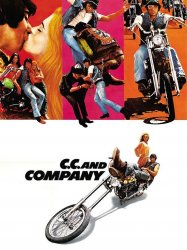
C.C. and Company (1970)
, 1h34Directed by Seymour Robbie
Origin USA
Genres Drama, Thriller, Comedy, Comedy-drama, Action, Adventure, Crime, Romance
Themes Transport films, Road movies
Actors Ann-Margret, William Smith, Sid Haig, Ned Wertimer, Jennifer Billingsley, Greg Mullavey
Roles Executive Producer
Rating48%





C.C. Ryder falls in with a biker gang in the desert, and then rescues Ann from trouble with the same gang. There next occurs a motocross race tied in with a fashion shoot. The Heads disrupt the event, but C.C. Ryder enters the race to gain Ann's favor. This puts him in conflict with Moon. When Ryder wins the race and leaves with his award money the gang kidnaps Ann, and Ryder must ride back to save her.
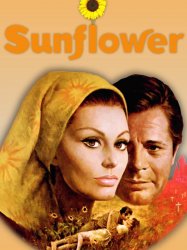
Sunflower (1970)
, 1h47Directed by Vittorio De Sica
Origin Italie
Genres Drama, War, Historical, Romance
Themes Political films
Actors Marcello Mastroianni, Sophia Loren, Lioudmila Savelieva, Germano Longo, Glauco Onorato, Gunārs Cilinskis
Roles Executive Producer
Rating73%





"A woman born for love. A man born to love her. A timeless moment in a world gone mad."

The Adventurers (1970)
, 2h51Directed by Lewis Gilbert, Ernest Day
Origin USA
Genres Drama, Action, Adventure
Themes Monde imaginaire
Actors Bekim Fehmiu, Candice Bergen, Charles Aznavour, Olivia de Havilland, Fernando Rey, Thommy Berggren
Roles Executive producer
Rating52%





Set in South America, it tells the tale of a rich playboy, Dax (Diogenes Alejandro Xenos) (Bekim Fehmiu) who uses and destroys everyone who crosses his path. His vileness results from having seen his mother and sister raped and murdered by Government troops. But his obsession is to avenge his father's murder. And yet, the father of Dax had been a true patriot unlike any of the other self-seeking Presidentes in an otherwise poor country always belonging to "the revolution." After Dax is himself shot and dies below a statue erected to exploit the memory of his father, does he finally realize he loved his country but had failed both his country and to be the man his father was.
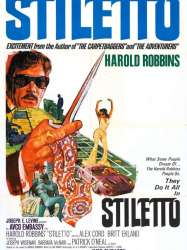
Stiletto (1969)
, 1h38Directed by Bernard L. Kowalski
Origin USA
Genres Thriller, Crime
Themes Films about immigration, Mafia films, Seafaring films, Transport films, Gangster films
Actors Alex Cord, Britt Ekland, Patrick O'Neal, Joseph Wiseman, Barbara McNair, John Dehner
Roles Executive Producer
Rating51%





A rich, jet-setting playboy has a secret life: he's also a professional Mafia hitman. When he decides it's time to retire from that life, he finds that his former employers don't like the idea that someone who knows so much about them won't be under their control anymore, and decide to send their own hitmen to eliminate him.
 Connection
Connection
